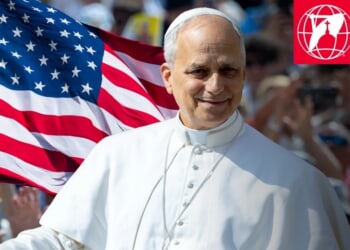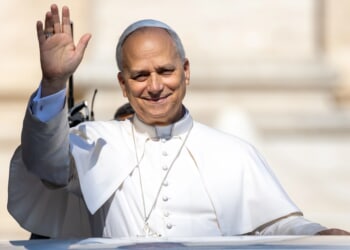California legislators are “reportedly negotiating to hand over hundreds of millions of dollars to Valero Energy Corp. to prevent the shutdown of its Benicia refinery in the San Francisco Bay Area,” Energy Newsbeat reports. The facility was slated to close in April 2026, part of a “wave of refinery closures that threaten to spike prices for gasoline, diesel, and jet fuel” and cut state refining capacity by 17 percent.
On Monday, Gov. Gavin Newsom asked Siva Gunda, vice chair of the California Energy Commission, to make sure refiners “continue to see the value in serving the California market, even as demand for fossil fuels continues its gradual decline over the coming decades.” (RELATED: California Eyes Takeover of Oil Refineries)
Embattled Californians have a right to wonder why their governor didn’t take steps to increase refinery capacity long before the departure of Valero.
Embattled Californians have a right to wonder why their governor didn’t take steps to increase refinery capacity long before the departure of Valero. The answer lies in the governor’s commitment to climate change superstition. In 2020, the governor blamed wildfires not on the state forest mismanagement but climate change. (RELATED: Climate Warriors’ Post-Wildfire Lunacy)
“The hots are getting hotter, the dries are getting drier,” Newsom explained, “something happened to the plumbing of the world. Climate change is real and exacerbating this.” As the people should know, Newsom earned a degree in political science, and so did Wade Crowfoot, his natural resources secretary. Neither man acknowledges that climate change is a matter of debate among experts. For the governor, it’s the basis for energy policy.
In 2020, Newsom announced that California would “phase out gasoline-powered cars” and issued an executive order requiring sales of all new passenger vehicles to be “zero-emission” by 2035. It was all part of “California’s fight against climate change.” (RELATED: California Impedes Its Own EV Progress)
In 2021, Newsom issued an order to “phase out oil extraction in California.” The order called for an end to fracking by 2024 and seeks pathways to phase out oil extraction across the state by no later than 2045. “The climate crisis is real,” Newsom said, and “California needs to move beyond oil.”
A year after the fracking shutdown, the state seeks to subsidize the Valero oil refinery. This comes on the heels of Newsom’s claim, in the July 23 Wall Street Journal, that “more than two-thirds of California’s electricity now comes from clean sources such as solar, wind and geothermal.” That prompted Edward Ring, director of water and energy policy at the California Policy Center, to run a fact check on the governor’s claims.
The two-thirds claim “isn’t even close to accurate,” and according to the most recent data, wind, solar, and geothermal account for only 31 percent of California’s in-state production. Adding nuclear and hydroelectric power, California’s total “clean” energy only accounted for 54 percent of the state’s electricity.
As Ring notes, in 2022, Newsom delayed the closure of Diablo Canyon, California’s last nuclear plant generating 2.2 gigawatts. In 2023, Newsom delayed the planned closures of three natural gas generating plants, also cranking out 2.2 gigawatts to the grid. If not for this intervention, these plants “would have already been taken offline by the environmentalist fanatics who run the state.” Here, Ring is being too kind.
There is little evidence that those fanatics have improved environmental conditions. They are better described as exclusionists, who seek to deprive Californians of the benefits of their own natural resources. As the people should know, California ranks fifth among the 50 states in proven oil reserves, with 1,716 million barrels.
Newsom’s crusade against oil and gas prevents Californians from deriving the full benefit from their own energy abundance. With the nation’s highest gasoline and electricity prices, many Californians are choosing to leave the state. Energy companies now plan to join them.
Newsom wants Valero to remain in a state he has made inhospitable for workers, families, and energy companies alike. Call it the California dialectic. Thesis and antithesis are apparent, but the synthesis remains unknown.
READ MORE from Lloyd Billingsley:
Governor Newsom Creates a New CDC
Newsom Launches Anti-Crime Crusade
Lloyd Billingsley is a policy fellow at the Independent Institute in Oakland, Calif.




![Gavin Newsom Threatens to 'Punch These Sons of B*thces in the Mouth' [WATCH]](https://www.right2024.com/wp-content/uploads/2025/08/Gavin-Newsom-Threatens-to-Punch-These-Sons-of-Bthces-in-350x250.jpg)
![ICE Arrests Illegal Alien Influencer During Her Livestream in Los Angeles: ‘You Bet We Did’ [WATCH]](https://www.right2024.com/wp-content/uploads/2025/08/ICE-Arrests-Illegal-Alien-Influencer-During-Her-Livestream-in-Los-350x250.jpg)








